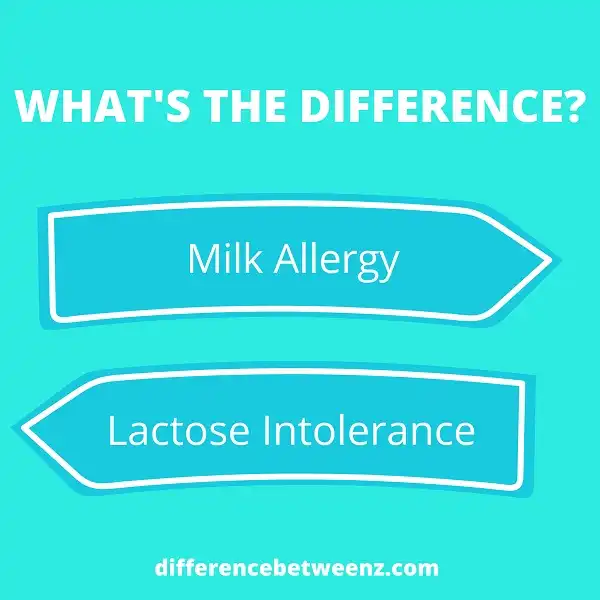Do you know the difference between a milk allergy and lactose intolerance? Many people are not sure what the difference is, and some people assume they are one and the same. In this blog post, we will discuss the difference between a milk allergy and lactose intolerance, as well as how to tell which one you may have. We will also provide some tips for managing each condition. Stay tuned!
What Is Milk Allergy?
Milk allergy is a food allergy that occurs when the body’s immune system reacts to milk proteins. Milk allergy is different from lactose intolerance, which is a digestive condition that makes it difficult to digest milk sugars. Milk allergy can cause a range of symptoms, from mild to severe, and can even be life-threatening. Milk allergy is most common in infants and young children, but it can also develop in adults.
The only way to prevent milk allergy symptoms is to avoid milk and milk products entirely. For people with severe allergies, this may require carrying an epinephrine auto-injector at all times in case of accidental exposure. With proper management, however, people with milk allergies can lead healthy, active lives.
What is Lactose Intolerance?
Lactose intolerance is a condition in which people have difficulty digesting lactose, a sugar found in milk and other dairy products. Lactose intolerance is caused by a deficiency of the enzyme lactase, which breaks down lactose into glucose and galactose, two simple sugars that can be absorbed into the bloodstream. People with lactose intolerance cannot digest lactose properly, and as a result, they may experience symptoms such as abdominal pain, bloating gas, and diarrhea.
Lactose intolerance is relatively common, affecting approximately 30 million Americans. Lactase deficiency can be inherited or acquired, and it is more common in adults than in children. There are several ways to manage lactose intolerance, including avoiding dairy products, taking lactase supplements, or consuming dairy products that have been treated to reduce the lactose content. With proper management, people with lactose intolerance can enjoy a wide variety of foods and beverages.
Difference between Milk Allergy and Lactose Intolerance
Milk allergy and lactose intolerance are two different conditions. Milk allergy is an immune reaction to one or more proteins found in milk. When people with a milk allergy eat or drink milk, they may have symptoms such as hives, wheezing, swelling, and vomiting. Lactose intolerance is the inability to digest lactose, a sugar found in milk.
People with lactose intolerance may have symptoms such as bloating, diarrhea, gas, and nausea after eating or drinking milk. Milk allergy is more common in children than adults, while lactose intolerance is more common in adults than in children. Both conditions can be treated by avoiding milk and milk products.
Conclusion
Although both milk allergy and lactose intolerance are conditions that affect the digestive system, they are two very different problems. If you are experiencing any of the symptoms listed above and think you may have a milk allergy, it is important to see a doctor for a proper diagnosis. Lactose intolerance can often be managed by making simple dietary changes, but if left untreated it can lead to other health problems.


